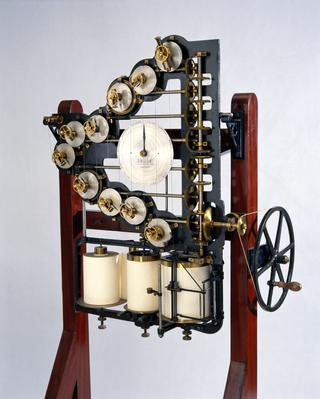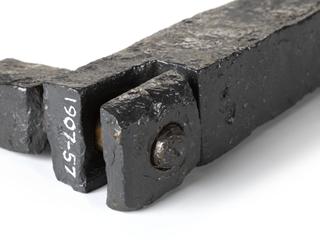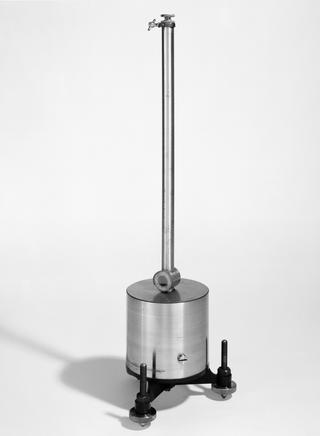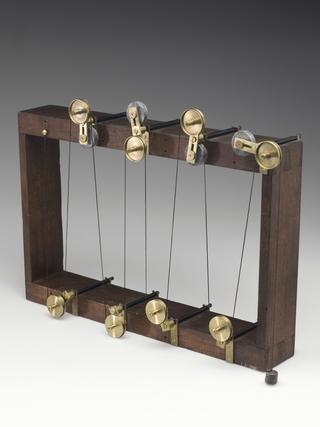Omori seismograph no.2, 1898
This seismograph is an early example of a design by Japanese seismologist Omori Fusakichi (1868-1923).
Omori designed a variety of seismographs during his career. One of his designs was modified and commercialised by Strasburg maker J. & A. Bosch brothers, who created an affordable instrument which both performed reliably and was relatively easy to operate. These Bosch-Omori instruments became widely adopted in seismograph stations around the world from the early decades of the 1900s. However, this earlier Omori device in the Science Museum collections was transferred to Britain in 1910 for its display at the Japan-British exhibition, intended to exemplify both Japanese innovation and the fruitful collaboration between scientific practitioners from both nations.
After the exhibition, British seismologist John Milne negotiated with Mano Bunji, the Japanese Commissioner and President of the Earthquake Investigation Committee, to arrange a two-year loan of the seismograph to Eskdalemuir Observatory following its display. When the agreed loan period expired, it was permanently gifted to the observatory by the Japanese Education Department in exchange for an English watch.
Eskdalemuir’s seismological programme was transferred to Kew Observatory in 1925 and no further seismological work undertaken there until the 1960s, when the site became a node in the World-Wide Standardized Seismograph Network, or WWSSN.
- Object Number:
- 1928-279/3
- type:
- seismograph





